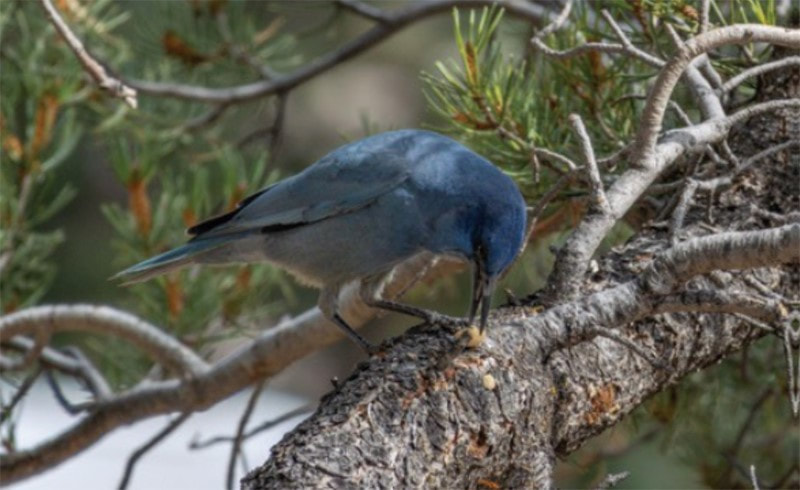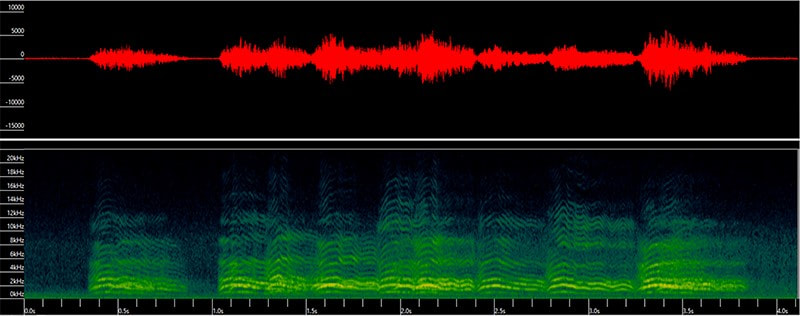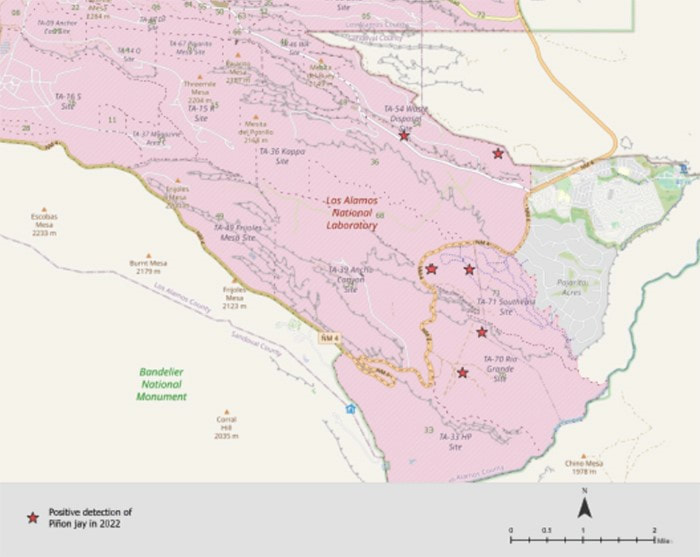|
Courtesy of the Los Alamos Reporter Biologists from Los Alamos National Laboratory have been collecting birdsong audio files from the pale blue, long-billed bird that relies heavily on piñon-juniper woodlands, a prevalent habitat on Lab property. The efforts to monitor the pinyon jay, a native New Mexican species in decline, are to better understand its on-site presence and avoid impacts to the Lab’s mission deliveries. It's also part of the Lab's responsibility to steward its natural resources. The jay lives in groups of 50 to 300 and forms smaller colonies of lifelong nesting pairs during the breeding season. A single bird may collect and cache as many as 2,600 piñon seeds from their estimated 15- to 25-square-mile home range. With impeccable spatial memory, pinyon jays return to their hidden seed caches year after year. As they move about, jays disperse seeds that help sustain piñon tree regrowth, creating a continuous cycle of a healthy piñon pine ecosystem. Unfortunately, scientists estimate pinyon jay populations have declined approximately 85% between 1970 and 2014 due to a variety of environmental and anthropogenic impacts, according to the landbird conservation network Partners in Flight. "There's an incredible amount of uncertainty regarding the pinyon jay," said Ethan Ditmanson of the Lab’s Environmental Stewardship group. "By collecting data and information, we can minimize that uncertainty and better understand potential impacts to operations relative to an Endangered Species Act listing." The jay was petitioned by wildlife advocates in April 2022 for listing under the Endangered Species Act. The U.S. Fish and Wildlife Service is currently following its regulatory procedure to review the petition, and will ultimately determine whether the jay warrants federal protections. In November 2022, Lab biologists began a sitewide pilot monitoring study of the pinyon jay to understand what areas of the Department of Energy’s property the jays use for breeding and seed caching. Biologists are also identifying how Lab operations may be affecting the species, as well as potential impacts to Lab operations from an Endangered Species Act listing. The study began with biologists deploying autonomous recording units in suitable habitat around the Lab, which measures into the 11,000-acre range. They recorded positive jay vocalizations during the breeding and nonbreeding seasons, then followed up on the detections with standardized ground surveys. "We now know that pinyon jays are here year-round, so we are working to develop a better understanding of how they are using the landscape at LANL," said Jenna Stanek, also of the Environmental Stewardship group. "Such understanding will help ensure a beneficial balance between mission operations and compliance if the jay does receive federal protections." "Proactively monitoring this species will help us prepare for an Endangered Species Act listing, potentially minimizing operational impacts like timing delays and geographic access limitations, while also protecting the pinyon jay on Lab property," added Audrey Sanchez from Environmental Stewardship. The Lab is currently home to three animals protected under the Endangered Species Act: the Mexican spotted owl, Jemez Mountains salamander and southwestern willow flycatcher. Compliance requirements often result in additional project planning considerations and constraints, and the Lab works to balance operations and development while preventing adverse impacts to federally listed species. "We are fortunate to have such a diverse and rich ecosystem that supports many species," said Jenette Hyatt, senior director for the Lab's Environment and Waste Programs. "To me, it's reassuring that the manner in which we execute our mission is being reviewed to understand our impact on the natural environment and ensure the beauty and benefit of the LANL ecosystem endures for generations to come."
0 Comments
Leave a Reply. |
Abiquiu NewsLocal News Stories Archives
July 2024
Categories |





 RSS Feed
RSS Feed